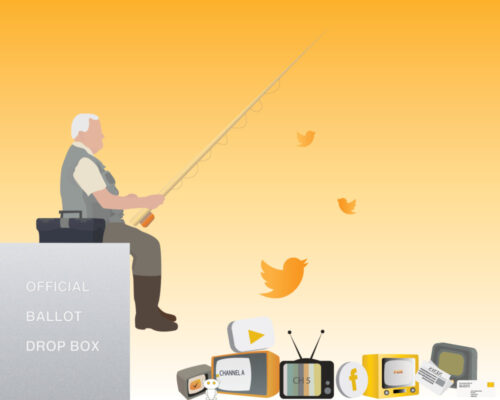Do this Before You Vote

By Alexa Bautista
It is currently election season and there are so many people and propositions on the ballot. However, where would someone turn to for more information? There are many commercials on television that advertise several candidates and propositions on general information, but should voters really listen to these?
It is very important for voters to do outside research to prepare for this election in order for the candidates that deserve the position and the propositions that should be enacted. Now, which sources should voters read?
The first step to know which source to read is to find out which sources are credible. Many voters turn to social media such as Twitter to see what many of the candidates advocate for. Trump is notoriously known for using Twitter to reach out to his supporters and make his opinions known. Although Twitter does reveal the true emotions of the candidates, there are different media sources that have their own biases such as CNN.
Karyn Beyer, Broadcast Electronic Media Arts Department professor, states that curating your social media is important to receive the content a user should see.
“Curate your social media feeds. That means not liking every Facebook page you see, and going into your account to unlike some of them. Adjust who and what gets to show up in your timeline.” Beyer said, “Review who you follow on Twitter and Instagram. Make sure the content you are getting is content you want, not just random stuff that interested you a few years ago but doesn’t serve to inform you of things now.”
One important source to search is the provided voter guide by the California Secretary of State. This site gives a brief overview of the different propositions that are on the California ballot as well as the positive and negative sides to each proposition.
For instance, Proposition 14 states that this proposition, “Authorizes $5.5 billion state bonds for: stem cell and other medical research, including training; research facility construction; administrative costs. Dedicates $1.5 billion to brain-related diseases. Appropriates General Fund money for repayment. Expands related programs. Fiscal Impact: Increased state costs to repay bonds estimated at about $260 million per year over the next roughly 30 years.” Under this summary, this site offers pros and cons as well as different organizations and people to contact for more information on this proposition.
Another way to do research for this election is to go to a candidate’s website as a starting point. Many of the candidates such as presidential candidates Joe Biden and Donald Trump provide general information about their campaign, their visions, and volunteer opportunities to help with their campaign. However, further background information should be added beyond their website.
Richard Baum, City College Political Science professor, states that voters should do their own research from sources that are credible, and sources that a person is familiar with such as elections commissions.
“A very useful source of information is the Official Voter Information Guide. It provides a short summary of each proposition explaining what happens if it passes as well as the pro and con arguments. Elsewhere, there is a detailed supposedly neutral analysis of the proposition with arguments made by those who are proponents and opponents.”
Lastly, it’s important to do research because it can negatively or positively affect several different communities and the overall state. Voters should be aware of what they morally think should be done and also consider the consequences.
